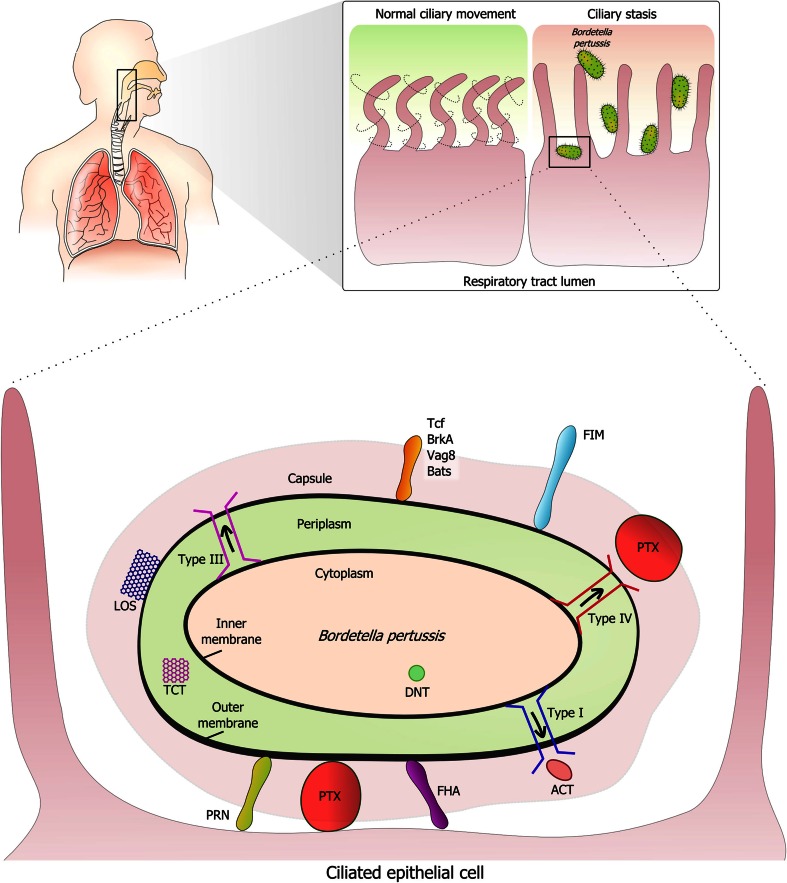Fig. 1.
Interaction of B. pertussis with mucosal surfaces. The Gram-negative bacterium B. pertussis interacts with ciliated epithelium in the respiratory tract. Cilia are found in the trachea, bronchi, and bronchioles and move continuously to keep the airway free of mucus-trapped microorganisms and dust. A number of B. pertussis proteins have been implicated in adherence to host receptors, including pertactin (Prn), cell-bound pertussis toxin (Ptx), filamentous hemagglutinin (FHA), fimbriae (Fim), tracheal colonization factor A (TcfA), Bordetella resistance to killing protein A (BrkA), the autotransporter Vag8, and other Bordetella autotransporters (Bats). Ptx and adenylate cyclase toxin (ACT) are toxic for host cells including phagocytes. Bordetella dermonecrotic toxin (DNT) induces vasoconstriction in vitro. B. pertussis contains lipooligosaccharide (LOS, or endotoxin) in its outer membrane. Type I, III, and IV secretion systems are indicated in red, blue, and pink, respectively. Ciliostasis is induced by tracheal cytotoxin (TCT) and may induce bouts of intense coughing in whooping cough patients in order to remove accumulated mucus

